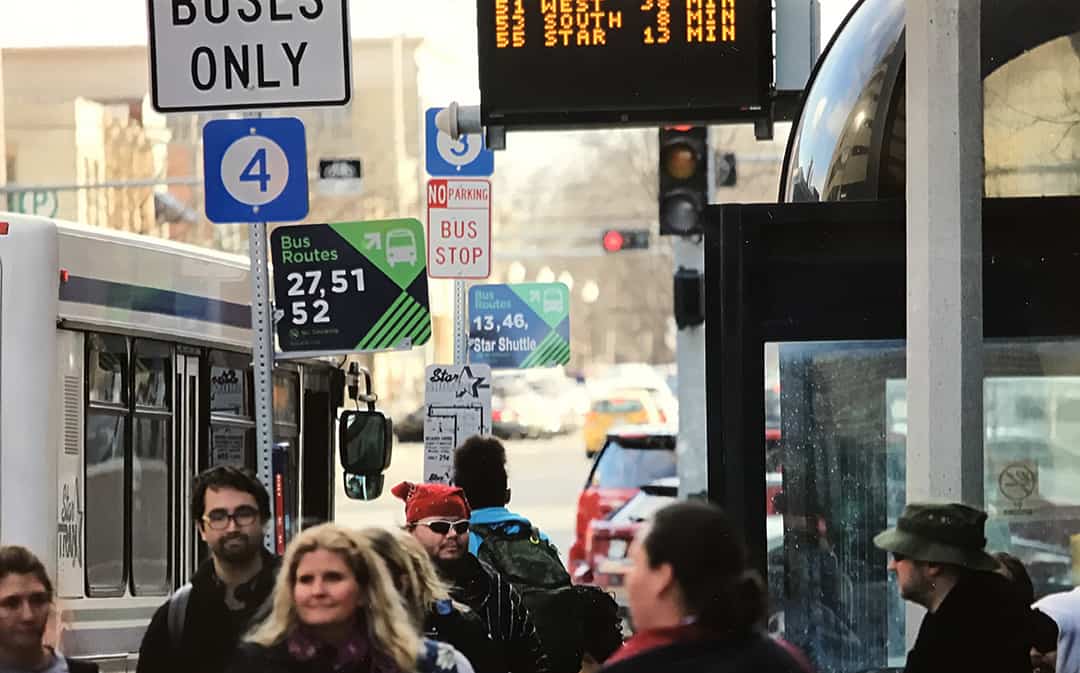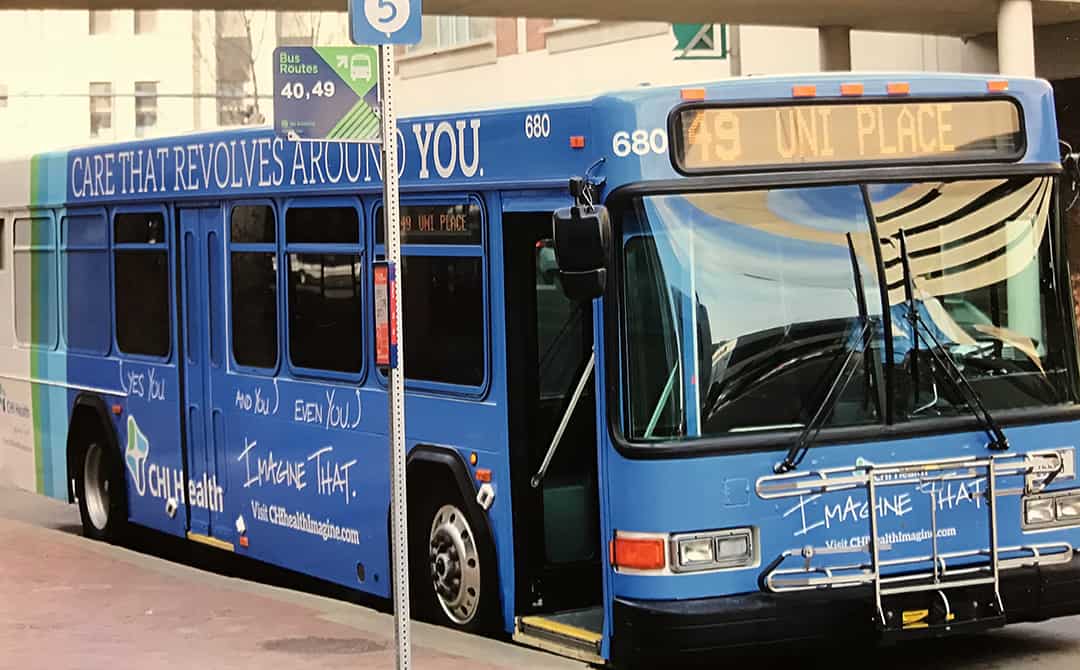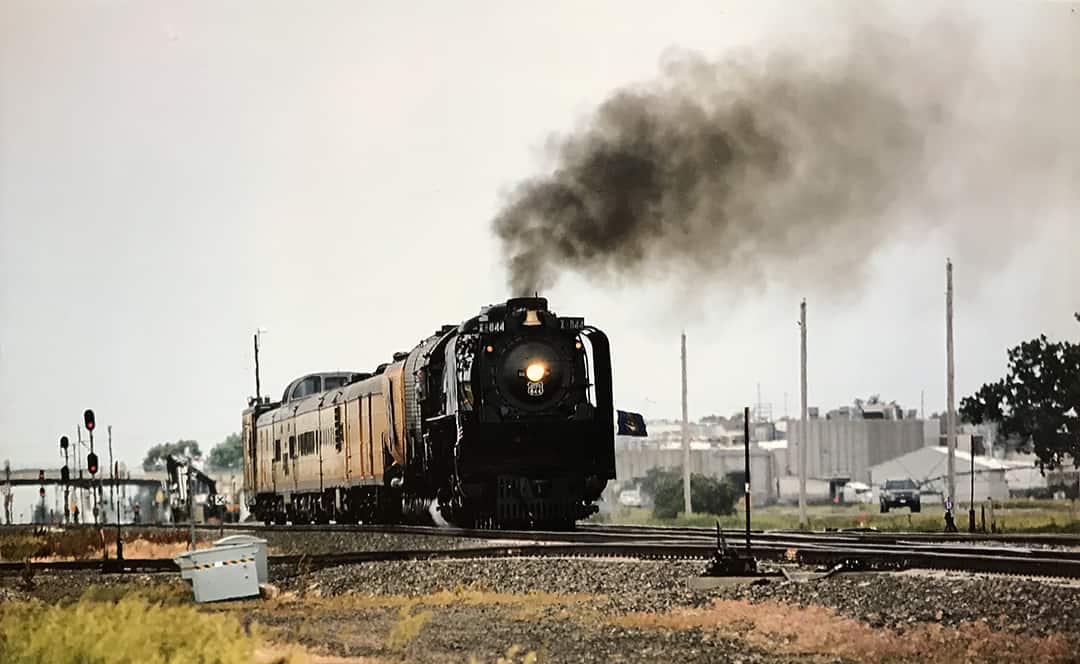
Public transportation utilized by a great portion of our population can be a strong factor in reducing harmful emissions and reversing global warming.
Many environmental groups target coal-burning power plants as the major culprit regarding harmful air pollution. These plants are big, fat, and unmovable, and they represent easy targets. However, at least in Nebraska, our coal-burning power plants have been fitted with scrubbing devices and emit very little pollution. In the rush for a quick fix, we have overlooked a subtler pollution source—the cars and trucks on our streets and highways. The EPA estimates that up to 40 percent of the air pollution comes from the transportation sector.
Transportation Polluters
All transportation vehicles create harmful emissions to some extent. In recent years, the EPA has imposed rigid standards regarding railroad locomotives to eliminate harmful exhaust particles. Diesel locomotives delivered today must meet Tier 4 emission standards, and the railroads have retrofitted many old locomotives with new technology that improves emissions quality.
A huge polluter in our country is the diesel-powered 18-wheeler truck that you see on highways and interstates everywhere. Although EPA has cracked down on the railroads regarding emissions, little has been done with the trucking industry, which is why you see those thick, black puffs of exhaust when the trucks start to move or change gears.
The emissions problems from your own automobile are less noticeable—no black puff of smoke, but the bad stuff is there! Omaha recently qualified for funding for new express bus service on Dodge Street because it was bumping the tripwire regarding dangerous ozone readings.
Tugboats moving barges on the Missouri River are diesel-powered and have the same emissions problems as the railroad diesel locomotives and diesel-powered trucks.
How Do We Deal with This?
Someday we may all own battery-electric cars that draw their energy from wind and solar generation, but we are a long way from this. The cost of battery-electric automobiles is high, and it will take time for it to come down to the level of gasoline-powered cars and trucks.
In the meantime, we can reduce pollution by using public transportation rather than driving our own cars. Recent surveys find that the average number of people in a vehicle on the streets of Lincoln or on I-80 between Lincoln and Omaha is only 1.2 persons per car. The typical StarTran bus carries 40 people (more when using standing room).
If more people would use StarTran, it would remove a lot of cars and trucks from the streets and lessen harmful emissions.

Rail Mode Is the Most Efficient in Energy Use
Of all the transportation modes, the railroad uses less energy to move a ton per mile than any other mode. This could be either a ton of freight or a ton of passengers.
The reason for this efficiency is that a train with steel wheels on steel rails encounters very little rolling resistance. The size of the contact between each train wheel and the rail it travels on is equivalent to a dime. Once a train goes into motion, it takes little power to keep it moving along the track.
Compare this with the contact between the 18 wheels on a semitruck and the pavement on a roadway. The footprint of the truck on the pavement is many times greater than that of a railroad car. Since pavement surfaces on highways and roads are not entirely smooth, a truck or car encounters considerable rolling resistance compared to a train.
Barge traffic on rivers also encounters resistance because the barges have to split the water to move. This is worse when the barges have to go upstream against the stream flow. The resistance is somewhat less when going downstream because the barge is aided by the flowing current.
Although modern jet airplanes travel at altitudes where the air is thinner, there is still air resistance against the plane’s surface that must be overcome. Also, the thicker air during takeoffs and landings at airports creates more resistance.
When you compare all the transportation modes, railroads with little rolling resistance use less fuel per ton-mile than the others. With less fuel expended, there will be correspondingly fewer harmful emissions.

What Can We Do?
As a society, we may no longer be able to afford the luxury of traveling by automobile with an average occupancy of 1.2 persons per car. Cars using gasoline and trucks using diesel fuel are significant polluters and contribute to global warming.
Using public transportation, like StarTran and Amtrak, should be a strategy to pursue. Long-distance trucking should be discouraged. Truck trailers and containers mounted on rail cars would cut the number of trucks on highways, and using this intermodal capability would lessen the number of diesel trucks on our highways.
Compressed natural gas and battery-electric advances provide a means to use clean energy to reduce harmful emissions and eliminate carbon that is blamed for global warming.
We should embrace this new technology and restructure our society to use energy-efficient and nonpolluting ways of getting from place to place and moving freight.
